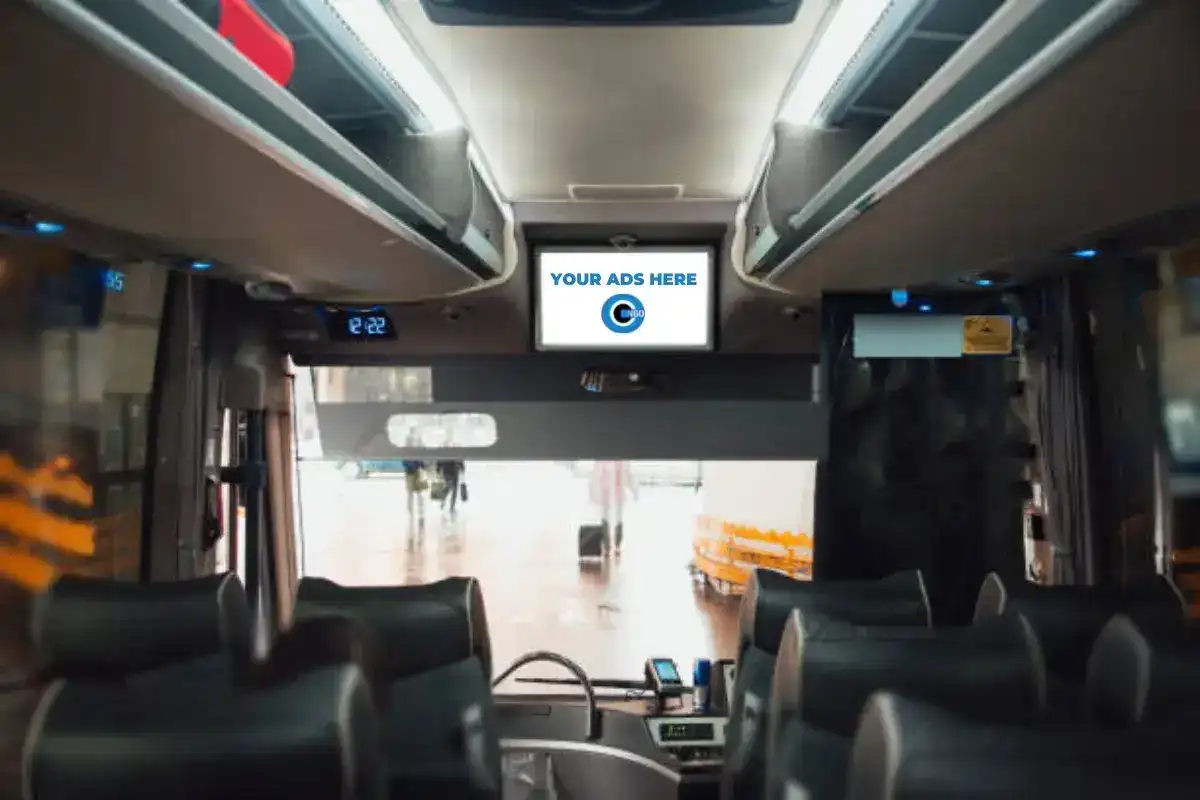Transit Advertising Philippines: A Cutting-edge Way to Promote
Transit Advertising Philippines: A Cutting-edge Way to Promote
Blog Article
Comprehending the Function of Transit Advertising in Enhancing Brand Visibility and Customer Engagement
Transit marketing has arised as an essential component in the marketing landscape, offering unique possibilities for brand names to elevate their exposure and engage consumers efficiently. With the capability to reach a captive and diverse target market throughout their daily commutes, these marketing approaches are not simply about presence; they are regarding creating meaningful links with potential clients. As we check out the diverse benefits and cutting-edge techniques within transportation marketing, it becomes essential to consider just how these components jointly influence consumer understanding and behavior, increasing inquiries regarding their long-term influence on brand commitment.
Definition of Transit Advertising
Transit advertising describes the method of promoting products, solutions, or brand names through promotions positioned in and around mass transit systems. This type of advertising encompasses a range of placements, including posters on buses and trains, electronic displays at transportation stations, and covers on the exterior of automobiles. It intends to reach a varied audience, profiting from the high foot website traffic linked with public transportation.
Transit marketing is tactically placed to catch the attention of travelers, that usually spend significant time waiting or traveling. By integrating ads into the everyday routines of people, brand names can produce a long-term perception and foster brand name acknowledgment. The medium is especially efficient in city environments, where mass transit is a key setting of travel.
In addition, transportation advertising and marketing can promote local targeting, enabling organizations to reach particular demographics based upon transit courses and terminal areas. As metropolitan populaces expand and the usage of public transportation increases, this advertising technique has gained prominence as a crucial element of integrated marketing techniques. The vibrant nature of transportation advertising, integrated with its ability to involve customers in a restricted atmosphere, highlights its importance in contemporary advertising techniques.
Advantages of Transportation Advertising
The performance of transit marketing hinges on its ability to provide a wide variety of benefits to brand names looking for to boost exposure and interaction. Among the primary benefits is the extensive reach it offers; transportation ads can successfully target varied demographics throughout urban areas, reaching both commuters and pedestrians alike. This wide exposure significantly increases brand recognition.
An additional benefit is the high regularity of impacts. As transportation automobiles take a trip along well-known paths and stop at several areas, they produce recurring direct exposure that reinforces brand messages. This frequency cultivates familiarity, which is critical in consumer decision-making.
Transit marketing is additionally cost-effective compared to various other media systems. Provided its expansive reach and potential for high impacts, brand names typically experience a reduced expense per thousand impacts (CPM), maximizing their advertising and marketing budget.
Moreover, transportation ads can create a feeling of neighborhood connection. By lining up with regional transportation systems, brand names can reverberate with local target markets and promote a feeling of regional pride. This localized strategy improves brand commitment and involvement, making transportation advertising a compelling option for businesses intending to strengthen their presence out there.

Effective Approaches for Transportation Campaigns
To optimize the influence of transit campaigns, brand names must take advantage of calculated preparation and execution customized to their target audience. Initially, identifying the demographic features of the target market utilizing public transit is essential. This permits brand names to create individualized messaging that resonates with potential clients.
Next, choosing the best transportation tools is necessary. Whether making use of bus covers, metro posters, or digital screens, each medium has one-of-a-kind benefits that can improve presence. For example, lively visuals on bus wraps can draw in attention, while digital ads can be upgraded often to mirror prompt promos.
Furthermore, incorporating a natural branding method across transportation platforms ensures uniformity and enhances the brand name's identity. Utilizing remarkable taglines and distinctive layouts will certainly reinforce brand name recall amongst commuters.
Lastly, timing is a crucial factor in carrying out effective transportation campaigns. Launching projects throughout peak traveling hours or regional occasions can significantly boost presence and interaction. By employing these techniques, brand names can efficiently harness the potential of transportation advertising, promoting greater awareness and link with their target audience. Eventually, a well-executed transit project can drive considerable growth in brand presence and consumer involvement.

Gauging Influence and Involvement
In assessing the efficiency of transit marketing campaign, precise dimension of impact and interaction is essential for brand names seeking to optimize their advertising and marketing strategies. Metrics such as reach, frequency, and impacts give foundational information to analyze exposure. Assessing these variables helps identify the amount of potential consumers are subjected to the promotions throughout their everyday commutes.
Interaction can be additional evaluated with customer interactions, such as web site web traffic, social networks states, and direct reactions to calls-to-action included in the ads. Utilizing devices like QR codes or unique URLs can assist in tracking of consumer actions directly linked to transit projects. Surveys and feedback systems also function as valuable techniques to collect qualitative information on consumer understandings and recall of the advertisement.
In addition, progressed analytics and attribution models can associate transportation exposure with succeeding getting habits, supplying insights into the return on financial investment. By utilizing an extensive technique that incorporates qualitative and quantitative measures, brand names can develop a nuanced understanding of their transit advertising and marketing influence. Ultimately, this data-driven technique makes it possible for you can try here brand names to refine their campaigns, ensuring they reverberate efficiently with target market and boost total brand visibility.
Study of Successful Campaigns
Effective transit marketing campaign offer as engaging examples of exactly how reliable techniques can raise brand presence and involvement. Transit Advertising Philippines. One notable case is the "I Love New york city" project, which transformed the city's picture and brought in countless visitors. By utilizing subway advertisements, signboards, and bus covers, the project produced a solid, natural brand identification, leading to a significant uptick in tourism and local service patronage
One more excellent campaign is Coca-Cola's "Share a Coke" campaign, which leveraged transit advertising and marketing to customize the brand name experience. By featuring prominent names on promotional products across various transportation systems, Coca-Cola fostered a deeper psychological connection with consumers, encouraging them to share their experiences on social Visit Your URL media.
Additionally, the "Got Milk?" project successfully utilized public transportation ads to get to a broad target market, enhancing the message of the importance of milk in a well balanced diet regimen. The project saw a measurable boost in milk intake in target demographics.
These study highlight that when implemented attentively, transit advertising and marketing can considerably enhance brand name presence, foster consumer engagement, and drive measurable outcomes, showing its vital duty in modern-day marketing approaches. - Transit Advertising Philippines
Final Thought
In final thought, transit advertising and marketing acts as a crucial tool for enhancing brand visibility and cultivating consumer engagement. By using strategically positioned ads within mass transit systems, brand names can successfully reach diverse target markets and strengthen recognition through regular exposure. The application of targeted messaging and cutting-edge approaches better enhances the influence of transit campaigns. Inevitably, the capability to gauge interaction and evaluate successful study emphasizes the performance of transit advertising and marketing in driving brand loyalty and customer communications.
Transportation advertising and marketing has actually arised as an essential aspect in the marketing landscape, providing special opportunities for brands to raise their exposure and engage consumers properly.In addition, transit marketing helpful resources can promote local targeting, enabling businesses to reach details demographics based on transit courses and terminal locations.In evaluating the effectiveness of transit advertising campaigns, accurate dimension of impact and involvement is necessary for brand names seeking to maximize their advertising and marketing strategies.Successful transit advertising campaigns serve as engaging examples of exactly how effective methods can raise brand name presence and interaction.In final thought, transit marketing offers as an important device for enhancing brand exposure and cultivating customer involvement.
Report this page